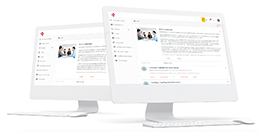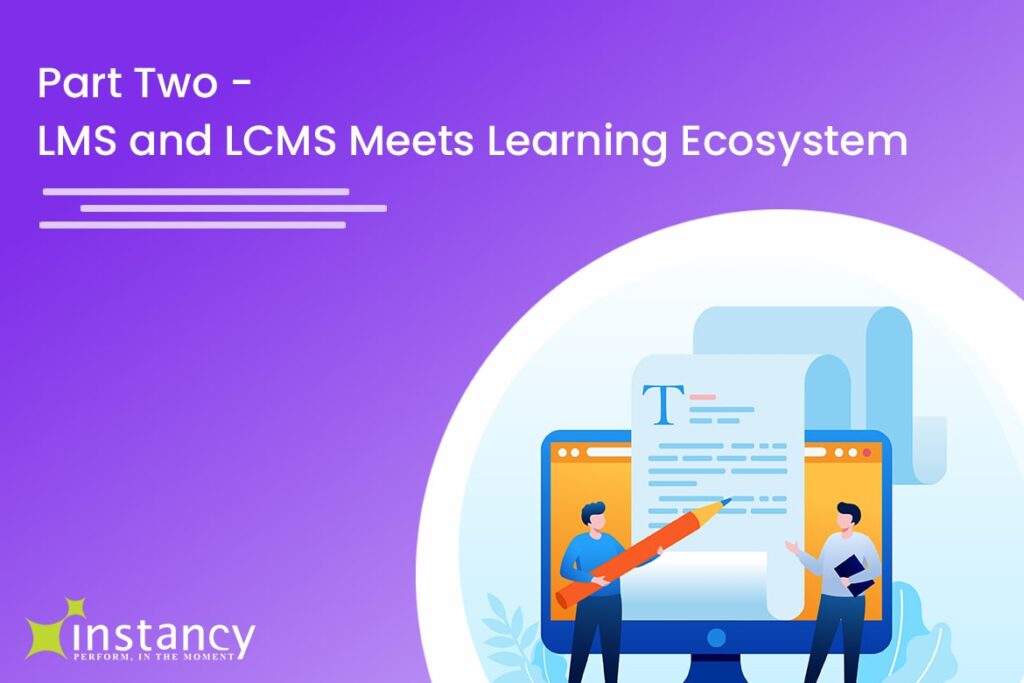When we discuss LMS and LCMS, we emphasize the fact that while many think they are similar, they are in fact quite different. The LMS and LCMS provide different functionality. The Learning Management System and the Learning Content Management System are in many ways disjointed. Integration is key in today’s learning environment.
What do we mean by disjointed?
Traditionally, the LMS and LCMS are disjointed in the sense that the LCMS is treated as a package inside the LMS. However, if we look beyond the LMS’s basic tracking of user completion and scores, the LMS cannot personalize the experience. It also cannot control content objects, change those objects, or reuse them. The authoring system typically completes these tasks. If they are not integrated, the LMS can only deliver the course but does not have the sophistication of the LCMS.

There are numerous authoring systems used, sometimes even within L&D groups. Most authoring software works as a standalone product, but many offer a learning delivery system as part of their offering. Taken one step further, these course delivery systems become part of the LMS!
As technology advances and new media and delivery systems emerge, integration of the many pieces becomes problematic. Is the output SCORM or x-API, or neither? Does ‘x’ eLearning authoring tool work with ‘y’ LMS system? When we dissect SCORM, it is content that is massaged and packaged into a finished, deliverable product or an eLearning course. SCORM does not address analytics. There is no way for the content to be personalized from the LMS. The LMS does not get detailed tracking data from SCORM. SCORM does not launch the course, track scores, or anything else. It allows the LMS to deliver the course in a standardized manner.
Much of what we used to define SCORM happened during the time when eLearning transformed. Unfortunately, eLearning has not moved much past there. It does not allow the LMS to personalize the experience. The tracking from SCORM to the LMS does not allow for page level or question level details. SCORM is giving us a finished, published eLearning course but cannot be used for course content on different courses. there are times when we want to offer small micro learning and times we want to package it into a larger course; however SCORM does not perform that well which makes it difficult for micro learning delivery.
Instancy was an early adopter of the technology behind eLearning and we were on the board that quantified the specs of SCORM. We always knew there was a critical gap because the specifications did not address important issues, such as the location(s) of the content, and whether the content was a reusable object. The ‘SCO’ in SCORM defines ‘shareable content object’ which is not easy to achieve because of emerging technologies and demands from developers as to how they wish to receive information during their learning experience. X-API tries to address this issue, but is difficult to integrate into the learning ecosystem. X-API does not even attempt to do what SCORM does. It merely tries to solve the problem relative to data analytics. Reusability or personalization is not even considered in x-API. It does not address the content per se. Bottom line is that it does not address the content management system and only what the learner is doing at a general level. You can embed the x-API calls where you want it in the content. It will open the door, get the data analytics you want, but it is limited to that. It does not address content usability or reuse.
With SCORM you can only offer the course as published. SCORM does not have the functionality to pick and choose which pieces of content you want to use for one published course. In that sense, the ‘S’ in SCORM defining ‘shareable object’ is a misnomer.
Instancy’s Approach
Instancy takes the approach that each component of the content can be used and reused at will. We strive to allow the user to navigate and personalize a learning path best for them. The Instancy Platform includes:
- Offer the entire course or only certain modules
- Tracking at the page level
- Knowing where the student visits and what they do while there
- Language personalization
- Serve content based on job role, scores of a pretest or other criteria
- Robust analysis of any data tracked
- Repository of content, graphics, web pages, test questions, learning paths, and videos in different locations
- Social learning as part of
- blended learning
Instancy is passionate about the people in the educational experience. All of us are learners, subject matter experts, or both. Time and again we say that the learning ecosystem is all about the learner. As we analyze a learning ecosystem, we take inventory of existing learning and technology assets while focusing on the direction the organization wants to take moving forward.
As we become more familiar, we also consider the types of content and if the content developers are internal, external or both. All content developers should have access to the LCMS. Ideally, content developers should be part of the learning ecosystem team. We like to use the term ‘economy of scale’ as this is an important concept when determining the volume of content and being able to publish it.
Although more mainstream, responsive UX and UI design are still gaining traction in the learning content community. Careful planning at the ecosystem level ensures your LCMS meets long-term needs.

We cannot emphasize enough the importance of tracking and analyzing data. The ability to seamlessly move, store, and analyze from all systems in the ecosystem makes for successful implementation. Yes, it is all interconnected, but can you launch that course on a mobile device or app and move that data through your LMS, LCMS and authoring systems? The industry is still challenged with this, but Instancy is ahead of our competitors.
If we had to settle on an ‘elevator pitch’, it would be that Instancy treats the LCMS and LMS as an integral part of the ecosystem and provides the ability for modular content, tracking and delivery, offline tracking and reporting, and continues to be designed from the ground up to move with you into the future.
Final thoughts
When taking the next forward creating synergy between your LMS, LCMS and your learning ecosystem, we must go beyond the traditional way of doing it. The traditional way gives you the basic capability of putting it on your LMS, but if you want to do more than that, there are always issues to overcome. The inclusion of disjointed tools on a distributed basis equals a bumpy road. If you have a course that is a combination of presentation slides, eLearning modules, video segments, social learning, and wikis, Instancy is uniquely qualified to serve you. For example, if you have a discussion forum, you do not have to find a way to blend it into your course. The Instancy Platform includes this on a Tab in our Dashboard. Let’s say the course design calls for a blended approach. The learner takes three courses followed by video and then followed by content from many different locations. The user has no idea what is going on in the background to facilitate this experience.
No one in the industry can do that but Instancy is one of the leaders in that venue.
Let us show you how we do it!
Do good work,





